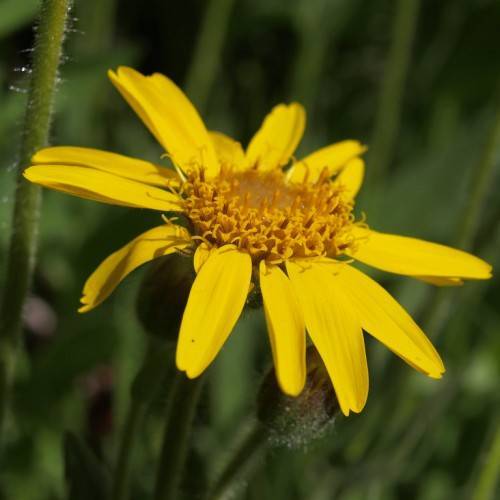
Hairy Arnica
Arnica mollis
Also Known As - Cordilleran LeopardbaneWatering:
Minimal
Hardiness Zone:
Flowers:
Flowers
Sun:
Sun
Soil:
Clay, Sand
Leaf:
Yes
Growth Rate:
Low
Drought Tolerant:
Yes
Care Level:
Medium
watering
Water Seep Spring Arnica (Arnica longifolia) lightly every 7 to 10 days during active growth. During the winter months, water the plant enough to keep the soil from completely drying out. To prevent root rot, allow the soil to drain completely between waterings. During the growing season, fertilize the plant monthly with a well-balanced liquid fertilizer.
sunlight
Seep Spring Arnica requires full sun, at least 5-6 hours per day to thrive. The best time for the plant to receive sunlight is in the morning between 6 and 10 a.m. or at least before noon. Prolonged exposure to the sun in the afternoons can be harmful and should be avoided. If grown in partial shade, it tends to become leggy and weak. Moderate supplemental lighting may help strengthen its form.
pruning
Seep Spring Arnica should be pruned in late winter or early spring, when the plant is still dormant. Generally, only dead, damaged, or diseased branches should be pruned, as well as any large branches that are crossing or rubbing against 1 another. Light annual pruning is recommended, and scissors or hand shears should be used to cut the branches to remove excess growth. Pruning should be limited, as Seep Spring Arnica is a late bloomer and pruning too much in the wrong area may reduce flowering.
